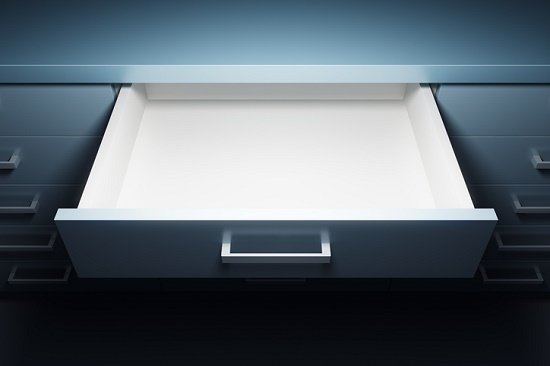
As hearing care professionals, there’s one particular type of hearing aid that we all worry about. It’s bad for the patient, and it can deter other people from even attempting to give hearing aids an opportunity.
They’re called “in-the-drawer” hearing aids. As opposed to behind-the-ear or in-the-canal hearing aids, ITD hearing aids never see the light of day, discouraging the patient and anyone the patient instructs about their bad experience.
For the countless numbers of individuals that have obtained hearing aids, a good quantity will call it quits on the prospect of better hearing for one reason or another. However, with today’s advanced technology, we know that this shouldn’t be the case.
But hearing aids are complicated. There are several things that can go wrong, generating a negative experience and causing people to call it quits. But there are ways to protect against this, steps you can take to make certain that, with a touch of patience, you get the optimum results.
If you’ve had a negative experience in the past, know somebody who has, or are planning on giving hearing aids a shot, you’ll want to continue reading. By being familiar with the reasons some people give up on hearing aids, you can avoid the same mistakes.
Listed below are the most common reasons people give up on hearing aids.
1. Selecting the wrong hearing aid or device
Let’s begin with the fact that everyone’s hearing is unique. Your hearing loss, like your fingerprint, is also unique to you. In addition, most individuals with hearing loss have greater challenges hearing higher-pitched sounds, like speech, as compared to other sounds.
As a result, if you choose a device that amplifies all sound uniformly, like most personal sound amplifiers, sound quality will suffer, and you’ll still most likely be drowning out speech. You need a hearing aid that is programmed to amplify the particular sounds and frequencies you have trouble with, while suppressing background noise in the process.
Only programmable digital hearing aids have this ability.
2. Incorrect hearing aid programming or fitting
Given that hearing loss is unique, the hearing aid must be custom-programmed for you exclusively. If the settings are inappropriate, or your hearing has changed over time, your hearing professional may have to adjust the settings.
Far too often, people give up too quickly, when all they need is some modification to the amplification settings. And, if your hearing changes, you might need the settings updated. Think about it like prescription glasses; when your vision changes, you update the prescription.
Also, nearly all hearing aids are custom-shaped to the contours of the ear. If you find the fit uncomfortable, it may either just take some time to get used to or you may need a new mold. Either way, this shouldn’t stop you from attaining better hearing.
3. Not giving hearing aids a chance to work
There are two problems here: 1) controlling expectations, and 2) giving up too quickly.
If you think that hearing aids will instantly return your hearing to normal, you’re setting yourself up for discouragement. Hearing aids will enhance your hearing drastically, but it requires some time to get used to.
In the early stages, your hearing aids may be uncomfortable and loud. This is typical; you’ll be hearing sounds you haven’t heard in many years, and the amplification will sound “off.” Your brain will adapt, but not over night. Plan on giving your hearing aids about 6-8 weeks before your brain fully adjusts to the sound.
Your perseverance will pay off—for patients who allow themselves time to adjust, satisfaction rates escalate to over 70 percent.
4. Not being able to hear in noisy environments
Patients with brand new hearing aids can come to be easily overwhelmed in congested, noisy situations with a lot of sound. This can happen for a few reasons.
First, if you immediately start using your new hearing aid in noisy settings—before giving yourself an opportunity to adapt to them at home—the sound can be overpowering. Make an effort to adjust in tranquil environments before testing at a loud restaurant, for example.
Second, you’ll need to adjust to the loud environments as well, in the same way you did at home. It’s common to have one negative experience and give up, but remember, your brain will adapt over time.
And finally, you may just need to update your hearing aids. The latest models are becoming increasingly better at eliminating background noise and boosting speech. You’ll want to reap the benefits of the new technology as the rate of change is fast.
It’s true that hearing aids are not for everyone, but the next time you hear a story about how hearing aids don’t work, you should begin wondering if any of the above applies.
The fact that hearing aids didn’t work for somebody else doesn’t necessarily mean they won’t work for you, particularly if you work with a established hearing care provider. And if you’ve had a substandard experience in the past yourself, maybe a clean start, better technology, and professional care will make all the difference.
